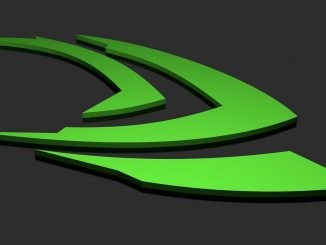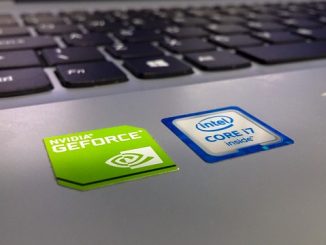Nvidia Corp. (NASDAQ:NVDA), a company known not only for its ability to redefine modern computer graphics but also for transforming and positioning itself as a leader in the self-driving car industry, has announced that its new artificial intelligence (AI) supercomputer which is capable of crunching more than 320 trillion operations a second, is the world’s first AI computing platform powerful enough for fully autonomous (Level 5) driving. To be classified as Level 5, vehicles, where even the steering wheel is optional, must be operated entirely by sensors and computers, with no human interaction.
At just about the size of a license plate, Nvidia’s new system — unveiled by its founder and CEO Jensen Huang at an event Tuesday in Munich, Germany — is 10x faster than its predecessor, NVIDIA Drive PX 2-which boasts the power of 150 MacBook Pros, and is specifically designed to help operate a car without a driver.
According to the Santa Clara, Calif.-based chipmaker, the new computing platform, codenamed Pegasus, will be available to Nvidia’s automotive partners, a list that includes the likes of Tesla (NASDAQ:TSLA), Audi, Mercedes, Toyota and Volvo in the second half of 2018. Nvidia says it already has more than 80 automakers using its AI chips to develop self-driving car technology and that other software firms and transportation network providers are working on integrating Nvidia’s supercomputing system into their vehicles. Pegasus’ pricing was not disclosed.
“Creating a fully self-driving car is one of society’s most important endeavors — and one of the most challenging to deliver,” said Huang during the system’s presentation. “The breakthrough AI computing performance and efficiency of Pegasus is crucial for the industry to realize this vision.”
Nvidia also said that Pegasus has enough power to process data from up to 16 dedicated high-speed sensor inputs for camera, detect objects, localize the car’s place in the world within centimeter accuracy, plan a safe and comfortable path to the destination, and control the vehicles itself. Additionally, Pegasus’ combined memory bandwidth exceeds 1 terabyte per second.
It should be noted that Nvidia isn’t the only company in the race to control a market that is expected to hit almost $80 billion by fiscal 2035. Search giant Google, Uber, Tesla and recently chipmaker Intel, which currently provides Google with all the computing power inside Waymo’s autonomous cars, are also fighting for control of the lucrative self-driving car market.
However, for the time being, Nvidia’s dominance in self-driving cars and early expertise in AI is quite obvious. In fact, big name car manufacturers like Audi, Tesla, and Volvo currently use Nvidia’s DrivePX on-board car computers to provide semi-autonomous driving capabilities in their vehicles.
So What
Well, this is one of the reasons Nvidia’s stock price keeps making higher highs. In fact, ticker spiked more than 220% in 2016, becoming S&P 500’s best performing name for that year. Since January of 2017 NVDA has skyrocketed, gaining nearly 90 points as it climbed from $103 to a 52-wkh of $192.95. NVDA, which is currently hovering around the $190 area, is poised to reach $200, if not by the end of December, certainly sometime in Q118.
Nvidia’s continued upward price-per-share trajectory is largely based on investors, who have long-term horizons, believing in the company’s ability to deliver in all of its major businesses — including gaming, data center, and automotive. Additionally, strong demand for high-performance AI GPUs, which are a major component in the AI computers going into data centers and self-driving cars, continues to be strong as more companies turn to AI to solve problems. It’s worth noting that in the first quarter Nvidia raked in $409 million in revenue from companies using its GPUs in their data centers, mostly for AI. That’s a 186% year-over-year increase, or $266 million more from the previous year.
“We’re at the very beginning of the AI revolution,” Danny Shapiro, Nvidia’s senior director of automotive work, was quoted as saying during a recent interview. “We’re fueling that revolution, and we’re extremely optimistic about where it’s going to take us.”
Nvidia shares were trading up less than 1% to $190.44 a share by the time markets opened on Wednesday.
Disclaimer: No position on the equity
Disclaimer: This page contains affiliate links. If you choose to make a purchase after clicking a link, we may receive a commission at no additional cost to you. Thank you for your support!




Leave a Reply